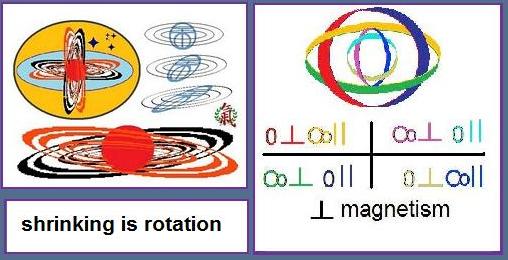Wednesday, May 23, 2012
Generalizing the Concept of Boundary
Generalizing the Concept of Boundary
L. Edgar Otto 23 May, 2012
In the abstract combining of cube representations as if their surface elements formed torus structures and vector cancellations we should not imagine four (tetracubes) as the general structure but at least these are five (pentacubes).
In the count of cubes in a stereonomic structure we have abstract centers which add or subtract, that is be a symmetry centered around hollow spaces of which we also may count intelligibly.
In this respect we have dualistic or dialectical dynamic structure systems as in quantum theory as the essence of chemistry carbon or NH3 molecules have shadow count that we can interpret as shadow geometric and Euclidean duality.
This general concept of symmetry breaking and building- as if in the metaphor of "water memory space" is really fluid space of boundaries (at least) in a quasifinite manner of which like the mix of alcohol and water we have the appearance of condensed volumes (mass defect idea also) if we regard the nucleus as simply a water drop.
So in the shadow views we have the continuous in relation to the golden ratio space, or discrete in relation to Fibonacci space, but these roles of course may be interchanged.
The total count of such things is intelligible depending on the dimension or the centering (as compactification or condensing) in which case the volume and the inherently change of elements of a matrix, diffusely in a bounded system of the abstractly changing of all coordinates or of the inertia of motion without local rest, sum to say, powers. At this place of intelligible count the laws are quasifinite so as to complete the cube in the Phi or Fibonacci information. PeSla's cube applies in the extension to n- natural dimensions and symmetries but the difference in duality and the difference in the measure of mass by the contribution of the rest shadows or general motion may set origins Initiators and Terminator ends of the connections of sequences or structures at an indefinite distance establish grounding for the substance and dynamical variation of intelligible count and memory in various states of the vacuum as if states of matter.
Superpositions may be suppressed by the order of physical or real implication by juxtaposition but not always that it changes the number of the dominating colors of the count.
In a quasifinite way the general stereonometry seems to be a conservation law that perhaps is part of a greater law that is an alternative to how we understand conservation laws in the methods we treat as boundaries. To combine gauge ideas with those of a more abstract and discrete nature (Weyl) is not as rigid or straightforward as we imagine- then again it is not a matter of anarchy and randomness either.
The possibility of self dual structures that can be so interpreted as particles, shadow particles, or systems of particles depends on quasicity as much as what is within or not of such natural intelligible structures as the first and simple count of the even or oddness of dimensions. On this difference we can erect various topologies as total theories but if the world is making sense it makes sense- or it does not- what is wrong with a very simple but bigger picture?
* * * * *
Ahh, I see Lubos is not confused today- he is simply wrong.
Subscribe to:
Post Comments (Atom)






No comments:
Post a Comment